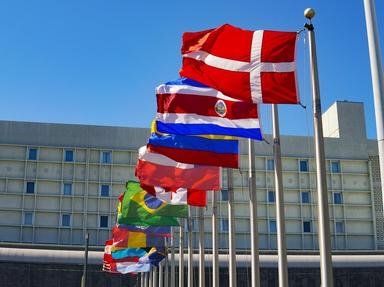
Flags of Africa Trivia Quiz
The composite image that I've put together contains details from ten different African flags. Can you work out which is which from the detail given? Good luck!
A label quiz
by Lord_Digby.
Estimated time: 3 mins.


| 1. |
| 2. |
| 3. |
| 4. |
| 5. |
| 6. |
| 7. |
| 8. |
| 9. |
| 10. |